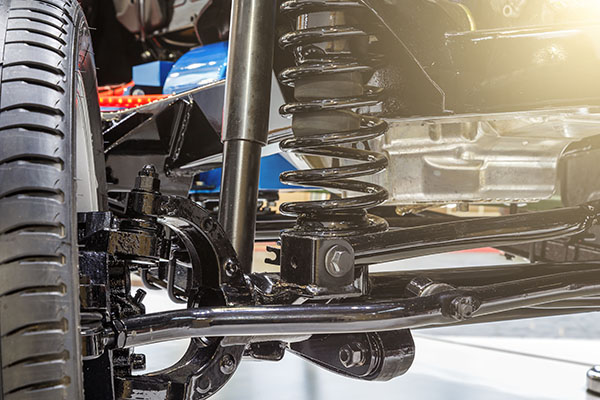
The suspension system of a vehicle plays a critical role in providing a smooth and comfortable ride, as well as ensuring stability and control on the road. Among the various types of suspension systems available, spring suspension and air suspension stand as two popular choices. Let's see the main reasons why they are so popular, their function, and their specifications - continue reading to find out more.
Spring Suspension
Spring suspension is the conventional and widely used suspension system found in most vehicles. It consists of coil springs or leaf springs, which are strategically positioned between the vehicle's chassis and its wheels.
When encountering bumps or road irregularities, the springs compress and absorb the impact, effectively minimizing the shocks and vibrations felt by the passengers.
Here are the advantages and disadvantages it offers:
- Simplicity: Spring suspension is relatively simple in design, making it cost-effective to manufacture and maintain.
- Durability: Coil springs and leaf springs are robust and have proven durability over extended periods of use.
- Limited Adjustability: Spring suspension lacks adjustability, which means the ride height and stiffness are fixed and cannot be easily altered according to driving conditions or preferences.
- Ride Comfort: While providing decent comfort, the ride can feel somewhat bumpy and harsh on rough terrains.
Air Suspension
Air suspension, also known as pneumatic suspension, utilizes air-filled rubber bags (air springs) in place of traditional coil or leaf springs. Most smooth-riding vehicles, like models from Mercedes-Benz and Rolls Royce, use air suspension.
Air suspension operates with the help of an air compressor, which inflates or deflates the air springs as needed. This allows for automatic leveling and adjustable ride height, adapting to different road conditions or load capacities.
A few distinct characteristics include:
- Adjustable Ride Height: Air suspension provides the flexibility to raise or lower the vehicle's ride height, allowing for improved aerodynamics, off-road capability, and easy loading/unloading.
- Enhanced Comfort: Air springs offer a smoother and more comfortable ride, effectively absorbing bumps and road imperfections.
- Cost: Air suspension systems are generally more expensive to install and maintain compared to traditional spring suspension systems.
- Complexity: The intricate design and additional components can increase the potential for mechanical issues and maintenance requirements.
If your vehicle is having suspension issues, make sure to visit MB Clinic Inc so we can sort things out! And if it's a Mercedes, even better! We are second to none when it comes to them - just book an appointment and leave the rest to us.